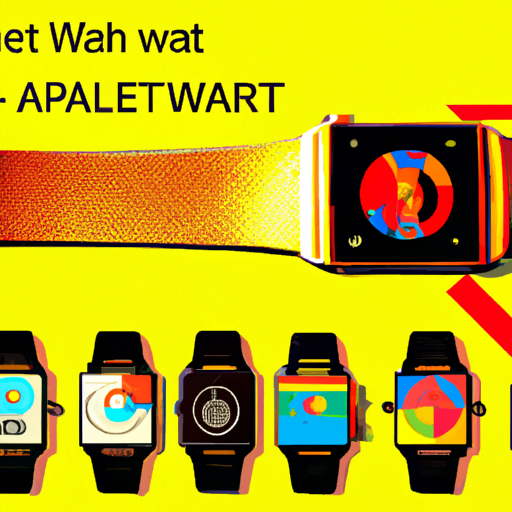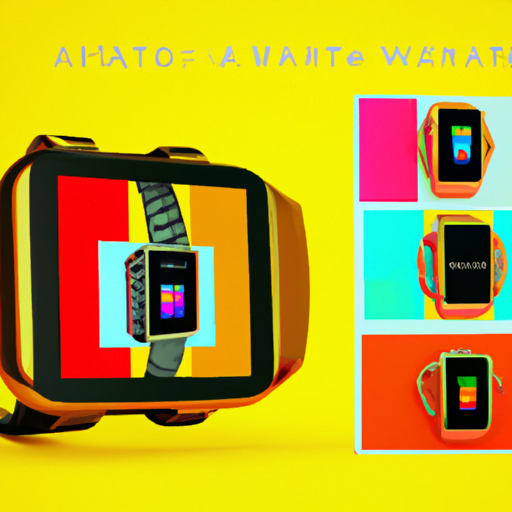
-
Table of Contents
Designing for Wearable Technology: Smartwatches, Fitness Trackers, etc.

Wearable technology has become increasingly popular in recent years, with smartwatches and fitness trackers dominating the market. These devices offer a range of features and functionalities that can greatly enhance the user experience. However, designing for wearable technology presents unique challenges and considerations that designers must take into account. In this article, we will explore the key principles and best practices for designing wearable technology, with a focus on smartwatches and fitness trackers.
The Importance of User-Centered Design
When designing for wearable technology, it is crucial to adopt a user-centered design approach. This means putting the needs and preferences of the user at the forefront of the design process. By understanding the target audience and their goals, designers can create products that are intuitive, functional, and aesthetically pleasing.
One of the key aspects of user-centered design is conducting thorough user research. This involves gathering insights about the target audience’s behaviors, preferences, and pain points. By understanding how users interact with wearable technology, designers can identify opportunities for improvement and innovation.
For example, Fitbit, a leading fitness tracker brand, conducted extensive user research to understand the needs of their target audience. They found that users wanted a device that not only tracked their fitness activities but also provided personalized insights and recommendations. Based on these insights, Fitbit introduced features such as sleep tracking and guided workouts, which greatly enhanced the user experience.
Designing for Small Screens
One of the biggest challenges in designing for wearable technology is the limited screen size. Smartwatches and fitness trackers typically have small screens, which require careful consideration when designing user interfaces.
When designing for small screens, it is important to prioritize the most important information and functionalities. This can be achieved through a minimalist design approach, where unnecessary elements are removed to create a clean and uncluttered interface. By focusing on the essentials, designers can ensure that users can easily navigate and interact with the device.
Another important consideration is the use of clear and legible typography. Since the screen size is small, it is crucial to use fonts that are easy to read at a glance. Sans-serif fonts are often preferred for their simplicity and readability on small screens.
Apple, known for its user-friendly design, has successfully tackled the challenge of designing for small screens with its Apple Watch. The device features a minimalist interface with clear typography and intuitive navigation. The use of the Digital Crown, a physical button on the side of the watch, allows users to scroll and zoom without obstructing the screen.
Seamless Integration with the User’s Lifestyle
Wearable technology is designed to seamlessly integrate into the user’s lifestyle, providing value and convenience. To achieve this, designers must consider the context in which the device will be used and design accordingly.
For example, fitness trackers are often worn during physical activities, such as running or swimming. Therefore, they need to be durable, water-resistant, and comfortable to wear. Fitbit, for instance, offers a range of fitness trackers with different designs and materials to cater to different user preferences and activities.
Furthermore, wearable technology should provide relevant and timely information to the user. For example, a smartwatch can display notifications from a user’s smartphone, allowing them to stay connected without constantly checking their phone. However, it is important to strike a balance between providing useful information and overwhelming the user with notifications. Designers should consider allowing users to customize their notification settings to avoid information overload.
Designing for Personalization
Personalization is a key aspect of designing for wearable technology. Users expect their devices to adapt to their individual needs and preferences. By allowing users to customize their devices, designers can create a more engaging and personalized experience.
One way to achieve personalization is through customizable watch faces. Smartwatches often allow users to choose from a variety of watch face designs, allowing them to express their personal style. Additionally, users can often customize the information displayed on the watch face, such as the time, date, and fitness metrics.
Fitbit takes personalization a step further by allowing users to choose from a range of interchangeable bands for their fitness trackers. This allows users to match their device with their outfit or personal style, making it a fashion statement as well as a functional device.
Designing for Accessibility
Accessibility is an important consideration in designing wearable technology. Designers must ensure that their products are inclusive and can be used by individuals with different abilities and needs.
One aspect of accessibility is designing for different screen sizes and resolutions. Wearable devices come in various sizes, from small fitness trackers to larger smartwatches. Designers should ensure that their user interfaces are responsive and can adapt to different screen sizes without compromising usability.
Another aspect of accessibility is designing for individuals with visual impairments. Wearable technology should provide options for larger text sizes, high contrast modes, and voice control to accommodate users with visual impairments.
Conclusion
Designing for wearable technology presents unique challenges and considerations. By adopting a user-centered design approach, designers can create products that are intuitive, functional, and aesthetically pleasing. Designing for small screens requires prioritizing essential information and using clear typography. Seamless integration with the user’s lifestyle and personalization are key factors in creating a valuable user experience. Finally, designing for accessibility ensures that wearable technology can be used by individuals with different abilities and needs. By considering these principles and best practices, designers can create wearable technology that enhances the lives of users.
